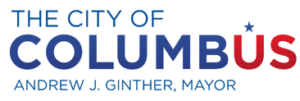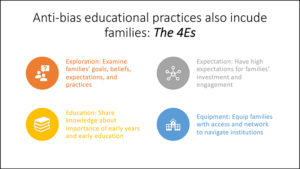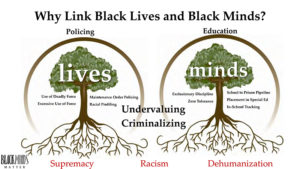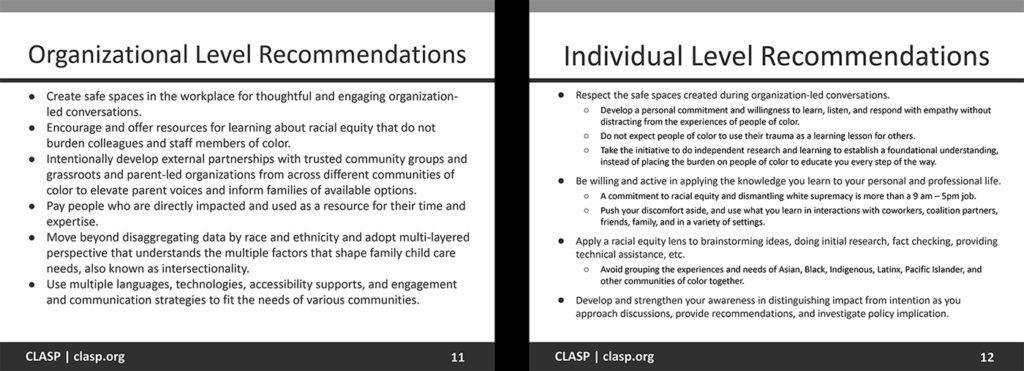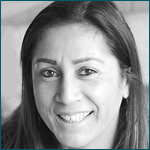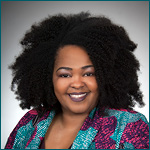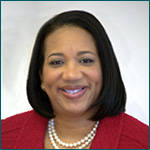RECAP: 2020 Symposium on Children

Crane Center for Early Childhood Research and Policy’s 7th annual (and first virtual)
Symposium on Children: Anti-Bias and Anti-Racist Practices in Early Childhood Education
Recapping the day itself was a task: It is never easy to capture the full insights from brilliant speakers and engaged participants. We encourage you to watch and re-watch the sessions and hope this page can serve as your go-to guide for the recordings, highlights, presentation materials and resources (such great resources!). We also encourage you to consider checking out your local Black-owned bookstores for book purchases.
Introduction
Sessions
Addressing Anti-Bias and Anti-Racist Practices in Early Childhood Education
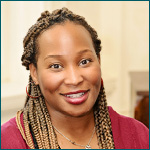 Featuring Dr. Iheoma U. Iruka, Research Professor of Public Policy, Fellow and Director of Early Childhood Health and Racial Equity Program at the Frank Porter Graham Child Development Institute at The University of North Carolina, Chapel Hill
Featuring Dr. Iheoma U. Iruka, Research Professor of Public Policy, Fellow and Director of Early Childhood Health and Racial Equity Program at the Frank Porter Graham Child Development Institute at The University of North Carolina, Chapel Hill
Dr. Iruka begins by reminding us that addressing anti-bias and anti-racist (ABAR) practices in early childhood is no different than addressing it in all arenas of our lives. It is about our own journey of unlearning and relearning that requires time, attention and commitment. She discusses how historical policies and practices created racial disparities, and how those disparities become associations and assumptions about Black and brown people. She is also careful to draw attention to the fact that these disparities are not due to poverty – wealthy or famous Black people still see the same disparities which stem from the stressors associated with being non-white (for example, when Serena Williams nearly died in childbirth).
Dr. Iruka challenges us to consider the sources of our evidence-based practices, research and policy. Are they steeped in white supremacy and a deficit lens of minoritized communities? Have we examined counter narratives? This is incredibly important as we look at how we shape questions and examine both potential solutions and the messaging around them. She suggests perhaps the most important question we must ask ourselves in addressing bias and racism, specifically in understanding racial disparities in early childhood education, is:
Do we really want a solution (that may require us to look, think, and act differently)?
Dr. Iruka states that this is where the intersection of research, practice and policy is critical. There must be a unified commitment toward anti-bias and anti-racism. Practice alone cannot create more equitable early childhood. It requires research to examine things differently and policies that support all children and families. To take actionable steps toward anti-bias and anti-racism, Dr. Iruka outlines her framework using the acronym R.I.C.H.E.R.:
R – Reeducate about history
I – Integrate rather than just desegregate
C – Critique everything
H – Humility of privilege
E – Erase racism
R – Re-vision anti-racist programming, research and policy
Contrary to a color-blind approach, Dr. Iruka encourages us to make ABAR work visible and to examine how systems create racial inequity and to honestly examine how that is present in our own early childhood settings. She also gives very practical steps to take in our own journey toward anti-bias and anti-racism.
QUOTABLE:
- “Before children are even born, they are experiencing racism,” and early childhood is not exempt from this racial inequity.
RESOURCES:
- “Implicit Bias and Structural Racialization” by the National Equity Project
- Video: Systemic Racism Explained by act.tv (complete with a resource list in the YouTube description)
- Dr. Iruka mentions the Moynihan Report. Here is an annotated edition as well.
- “The Strength of Black Families” by the Equal Opportunity Review
- Click here for Dr. Iruka’s slides
Don’t Look Away: Embracing Anti-Bias and Anti-Racist Classrooms
 Featuring Dr. Iheoma U. Iruka, Research Professor of Public Policy, Fellow and Director of Early Childhood Health and Racial Equity Program at the Frank Porter Graham Child Development Institute at The University of North Carolina, Chapel Hill
Featuring Dr. Iheoma U. Iruka, Research Professor of Public Policy, Fellow and Director of Early Childhood Health and Racial Equity Program at the Frank Porter Graham Child Development Institute at The University of North Carolina, Chapel Hill
 Featuring Dr. Stephanie Curenton, Associate Professor in the Boston University Wheelock College of Education & Human Development, Executive Director of the Ecology of School Readiness Lab, and Program Director for Child & Youth Policy Certificate
Featuring Dr. Stephanie Curenton, Associate Professor in the Boston University Wheelock College of Education & Human Development, Executive Director of the Ecology of School Readiness Lab, and Program Director for Child & Youth Policy Certificate
Dr. Iheoma Iruka and Dr. Stephanie Curenton, co-authors of the book Don’t Look Away: Embracing Anti-Bias Classrooms, share an overview of their new book while facilitating a discussion on why anti-bias classrooms are important, and how educators can embrace anti-bias classrooms.
The goal of Don’t Look Away is that educators and non-educators alike will learn from the history of early care and education and take action steps every day to embrace anti-bias classrooms. The book features stories inspired by real world events, defines terms surrounding racial justice, encourages multi-modal reflection activities (including movement, music, and reading), and asks the reader reflection questions.
During the session, Dr. Iruka and Dr. Curenton engage the audience with questions like, “why do we as a field need to be striving for fully embracing anti-bias classrooms?” Dr. Curenton frames the discussion with a reminder about current challenging events: “Given everything that is happening, and everything that is putting pressure on families of color, like COVID-19 and obvious police brutality, we think it’s even more important to be striving to embrace anti-bias classrooms.”
The audience shares insights such as, “It’s long overdue,” “Classrooms needs to be safe spaces,” and “Our classrooms are the microcosm of the world of our future. If we can bring these changes in our classrooms, these children will grow up and hold the world in their hands.”
The authors also detail action steps for educators to implement in their classrooms:
-
- Use family engagement as a tool
- Conduct authentic self-inventory and cultural awareness and bias
- Challenge misperceptions and stereotypes
- Discuss and address racial bias, prejudice, and discrimination with children in the early years and beyond
- Recruit and retain Black educators and other educations of color
Dr. Iruka also challenges early childhood providers around engaging with families, saying “I want us to do better with family engagement… thinking of using family engagement to help families create assets (like wealth and freedom).” The authors go on to outline the 4 E’s of engaging families as a core component of anti-bias and anti-racist practice.
QUOTABLE:
- “Part of anti-racism and anti-bias is that we have to understand and work with families. To understand children, we have to know their kin.” – Dr. Iruka
- “Don’t be colorblind… we want you to look through the lens of the Black children in your classroom.” – Dr. Iruka
- “These are problems that need discussed very early on. The height of prejudice thinking starts in the preschool years… they [children] notice when people are treated differently because of the way they look… if we want to counter this, then we have to be explicit and intentional in that.” – Dr. Curenton
- “We see anti-bias teaching as something you do every day in the classroom.” – Dr. Curenton
RESOURCES:
- Don’t Look Away: Embracing Anti-Bias Classrooms can be bought through your local Black-owned book store
- Literature like this list and Let’s Talk About Race by Julian Lester
- Kirwan Institute’s implicit bias training
- Harvard’s Project Implicit
- Luis Moll’s Funds of Knowledge
- ACSES tool (a classroom observation tool that looks at classroom quality from the lens of marginalized children in the classroom)
- Trust for Learning – Principles of Ideal Learning
- Click here for the slides
Black Minds Matter
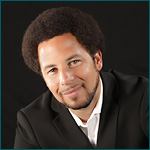
Featuring Dr. J. Luke Wood, Vice President of Student Affairs & Campus Diversity and Dean’s Distinguished Professor of Education at San Diego State University as well as Co-Director of the Community College Equity Assessment Lab
Black Minds Matter is a collection of researchers doing work that shows the linkage between policing and school and how the valuing of black lives is intertwined with valuing black minds. Dr. J. Luke Wood specifically outlines:
- Ways in which we see black minds being undervalued in education:
- Assumption of academic inferiority
- Lack of placement in gifted and talented programs
- Over placement in special education
- Ways in which we see black minds being over-criminalized in education:
- Excessive referrals, suspensions, and expulsions
- Other types of exclusionary discipline that lead to a difference in educational experience for children of color
When there are breakdowns in student performance, research shows that the usual response is based on a deficit notion (i.e., blaming children, their families, or their communities), but we need to be careful not to jump to the wrong assumptions. Dr. Wood outlines a pyramid of success for children that is built upon our own perceptions (which are informed by stereotypes). Addressing our own perceptions is how we more effectively impact student success.
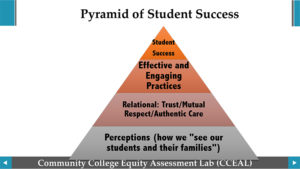
Click the image to enlarge (slide #8).
Three principles that are critical to addressing perceptions, specifically around Black children, are distrust, disdain, and disregard. Through both specific examples of how this looks in early childhood settings and compelling counter-narratives from parents of Black children, Dr. Wood highlights the prevalence of these issues and the need to create equitable learning for all children. While we often talk about the trauma that impacts children’s education, Dr. Wood challenges us to also address the trauma happening within the education system that creates these differential experiences for Black and brown children. We can do this by examining our own perceptions which, in turn, effectively changes our practice.
QUOTABLE:
- “Black children account for 18% of preschool population but 42% of preschool suspensions. These disparity rates continue on throughout K-12 education.”
- “There’s no mystery on how to teach Black children. The first is that you treat them like human beings. The second is that you love them.” – Dr. Wood quoting Asa G. Hilliard, III
RESOURCES:
- Click here to view the slides
Books:
- Advancing Black Male Student Success from Preschool through Ph.D. by Shaun R. Harper and J. Luke Wood
- Black Minds Matter by J. Luke Wood
Other scholars mentioned by Dr. Wood:
- Donna Y. Ford
- James L. Moore, III
- Idara Essien-Wood
- Shaun R. Harper
- Tyrone Howard
- Eboni Zamani-Gallaher
- James Earl Davis
- Brian L. Wright
- Chester M. Pierce
- Darrel Wing Sue
- Walter Gilliam
Research:
Preparation and Policy Levers for Anti-Racist Early Childhood Practices
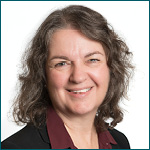 Featuring Christine Johnson-Staub, Senior Policy Analyst, Child Care and Early Education at CLASP
Featuring Christine Johnson-Staub, Senior Policy Analyst, Child Care and Early Education at CLASP
Ms. Hardy describes the ways in which racial inequity and systemic racism and discrimination show up in early childhood. For example:
-
- Child care is the least affordable for Black and Latinx families with low incomes;
- Native American and Latinx communities are more likely to live in child care deserts; and
- Child care workers – disproportionately women of color – are paid poverty level wages, and women of color are more likely to be relegated to lower-level positions.
She describes the historical context of racial inequity in early education and reminds listeners that this foundation has never been dismantled. Ms. Hardy also guides a discussion on white supremacy culture and bias, and its impact on cultural expectations such as family engagement strategies, language, etc. For instance, this shows up in the classroom and in the ways that educators communicate with parents, as well as in the disproportionate discipline rates for Black children, especially boys.
She offers thoughtful next steps through both organizational- and individual-level recommendations.
Ms. Johnson-Staub discusses ways to approach early learning policy through a racial equity lens, such as by: discontinuing “deficit” language and modes of thought, ensuring that people most impacted by policy are at the decision-making table, and centering the voices of people of color (including through new and creative ways while the pandemic poses significant challenges in communication).
She also describes how “scarcity thinking” shows up in the policy realm – e.g., how there’s a mentality that there is never enough funding for childhood programs – and offers concrete steps for state and local policymakers that could improve access to quality care.
QUOTABLE:
- “When we focus on centering racial equity in a way that only addresses policies and outcomes, we fall short. And this is because centering racial equity in policy is absolutely necessary, but it’s not sufficient. It’s insufficient because laws and policies do not exist in a vacuum. They are researched, developed, implemented, and administered by people – and people are shaped by their experiences.” – Ms. Hardy
- “Racial equity is not a 9-5 thing.” – Ms. Hardy
- “It’s really important that people who are impacted by policies are at the table or in the room.” – Ms. Johnson-Staub
RESOURCES:
- Read the report “Equity Starts Early: Addressing Racial Inequities in Child Care and Early Education Policy” by Christine Johnson-Staub
- Read reports from Alycia Hardy on anti-racism in the field and on centering parent voices in policy development
- Click here to view slides
Developing Positive Racial Identity in Young Black Children
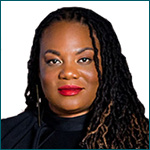
Featuring Medina Jackson, MSW, Director of Engagement at PRIDE (Positive Racial Identity Development in Early Education) at the University of Pittsburgh

Featuring Dr. Brian L. Wright, author, Associate Professor and Program Coordinator of Early Childhood Education in the Department of Instruction and Curriculum Leadership, and Coordinator of the Middle School Cohort of the African American Male Academy at the University of Memphis
Ms. Jackson opens with a spoken word poem about her own personal story which fuels her work at P.R.I.D.E. P.R.I.D.E. defines racial identity as self-perception and sense of belonging to a group; how you define and describe yourself; and how you distinguish yourself from other racial and ethnic groups. According to P.R.I.D.E., when young children have positive racial identity, they own and embrace their racial heritage with dignity; are comfortable with racial and ethnic heritage; and understand the characteristics they share with their biological family.
P.R.I.D.E. draws inspiration from the work of Dr. Beverly Tatum, Dr. Erin N. Winkler’s research “Children are not Colorblind: How Young Children Learn Race”, and the work of Drs. Mamie and Kenneth Clark, specifically the “Doll Test.”
Ms. Jackson discusses the different stages of racial awareness based on age. Young children process racial differences as early as 3 months and social biases from as early as 3-5 years. Ms. Jackson then shares teacher strategies for talking about race in the classroom:
-
- Build your classroom library to include books about children with all different skin colors and types of hair, as well as books that teach children how we each get our skin color.
- Integrate the unit on skin color into all other aspects of classroom curriculum including art, writing and humanities.
Dr. Wright focuses on developing positive racial identity in young Black boys beginning with the need to challenge the narrative and re-language the way we frame and discuss Black and brown boys, which is often from a deficit lens. Dr. Wright goes on to discuss how the experiences of Black boys are often full of negative stereotypes that begin as early as preschool. Black boys are often “adultified” and “criminalized” and get a message as early as preschool that they are watched and not welcome in schools and classrooms. We need to prepare teachers so they are culturally competent in their teaching and in the classrooms.
In order to move from a deficits approach to a strengths approach, Dr. Wright uses the Anti-Deficit Achievement Framework to invert questions and challenge how we frame Black and brown children. For example, instead of asking “why are Black boys not succeeding in education?”, focus on resilience by asking “how do Black boys from low-resourced schools manage to succeed in school?”
Dr. Wright also discusses how positive depictions in books help young children think about racial identity. Look for books where Black boys are the protagonists, where the importance of representation and reflection is emphasized (i.e. “mirror books and not window books”), where the features that Black and brown children bring to the classroom are affirmed, and books that remind them that they matter.
QUOTABLE:
- “We know young children are not colorblind and they notice differences early.” – Ms. Jackson
- “In order for us to cultivate their [children’s] healthy racial/ethnic identity, agency and voice, it’s important for us as educators to begin to challenge the way we think, write, and talk about this population [of Black and brown boys].” – Dr. Wright
RESOURCES:
- Click here to see Ms. Jackson’s slides
- Check out the P.R.I.D.E. podcast “In My Skin”
- The Brilliance of Black Boys: Cultivating School Success in the Early Grades by Brian L. Wright with Shelly L. Counsell
- Read Dr. Wright’s article for NAEYC, “Black Boys Matter: Cultivating Their Identity, Agency, and Voice”
- Anti-Deficit Achievement Framework
- Rudine Sims Bishop has been called the “mother of multicultural literature”
Recommended children’s books from Ms. Jackson:
- The Skin You Live In by Michael Taylor and illustrated by David Lee Csicsko
- All the Colors We Are: The Story of How We Get Our Skin Color by Katie Kissinger
Recommended children’s books from Dr. Wright:
- Chocolate Me! by Taye Diggs and illustrated by Shane W. Evans
- The King of Kindergarten by Derrick Barnes and Vanessa Brantley-Newton
- The Word Collector by Peter H. Reynolds
- I Am Every Good Thing by Derrick Barnes and Gordon C. James
- For Beautiful Black Boys Who Believe in a Better World by Michael W. Waters and Keisha Morris
- Preaching to the Chickens: The Story of Young John Lewis by Jabari Asim and illustrated by E.B. Lewis
Anti-Bias and Anti-Racist Practices in Action
 Featuring Soobin Oh, Senior Early Education Advisor at Children’s Institute in Portland, Oregon
Featuring Soobin Oh, Senior Early Education Advisor at Children’s Institute in Portland, Oregon
 Moderated by Dr. Iheoma U. Iruka, Research Professor of Public Policy, Fellow and Director of Early Childhood Health and Racial Equity Program at the Frank Porter Graham Child Development Institute at The University of North Carolina, Chapel Hill
Moderated by Dr. Iheoma U. Iruka, Research Professor of Public Policy, Fellow and Director of Early Childhood Health and Racial Equity Program at the Frank Porter Graham Child Development Institute at The University of North Carolina, Chapel Hill
In this panel, the educators discuss how they approach anti-bias and anti-racist practices in each of their unique settings as a home-based provider (Ms. Ceja), an organization empowering families in racial identity (Dr. Jackson), and in teacher training and pre-service programs (Mr. Oh). Specifically,
- Ms. Ceja shares how the population of her children represent mostly Central American and Black families; she actively works to help children embrace, appreciate, and engage in different cultures and languages and teaches children to love their own uniqueness.
- Dr. Jackson talks about empowering families which involves translating the research that shows providing affirmations of being Black is a way to build resilience against racism within education settings. He also shares how Village of Wisdom provides tools for parents to evaluate their child’s learning environments and to empower them to expect anti-bias and anti-racist environments for their children.
- Mr. Oh speaks to the core of ABAR work which involves educators slowing down and leaning into opportunities for ABAR learning as well as evaluating classroom materials.
When speaking to the importance of culturally sensitive practices,
- Dr. Jackson explains that learning is the process of connecting new information to prior knowledge. Prior knowledge comes from our own culture, so as educators, if we don’t understand a child’s culture, we can’t help them make those connections. He also advocates for giving parents the space to understand their own racial identity and valuing the wisdom that they bring.
- Mr. Oh talks about the need to give teachers the time and space to create the contexts that affirm culture and teach to that, creating an individualized context to learning that can’t happen with tightly scripted curriculum.
- Ms. Ceja talks about building a strong network with other home-based providers in her area, citing that community and communication are key. She also shares that her focus is on translating the philosophy of ABAR work into practice in a hands-on way with her teachers, children and families.
The panel also challenges us to examine if our ideas of readiness and quality are coded racism, and how those in positions of power – those with platforms – should heed the call to create space and opportunities for more nuanced conversations around social identity (instead of putting that work on Black and brown communities).
RESOURCES:
- Anti-Bias Education for Young Children and Ourselves from NAEYC is organized along social identities and what teachers should think about and do when considering different social identities
- “Self-Determination Theory and the Facilitation of Intrinsic Motivation, Social Development, and Well-Being” by Richard M. Ryan and Edward L. Deci
- Black Genius Planning by Village of Wisdom creates a profile and a plan that documents a student’s academic, emotional, and cultural strengths
- Ronda Taylor Bullocks of We Are (Working to Extend Anti-Racist Education) in North Carolina regarding literature to help children explore differences
- Funds of Knowledge by Luis C. Moll
- “All About Me” autobiographical books created by kids. Here is one template from Scholastic
Culturally relevant practices and researchers:
- “But That’s Just Good Teaching! The Case for Culturally Relevant Pedagogy” by Gloria Ladson-Billings
- “Understanding Culturally Responsive Teaching” by New America
- Geneva Gay
- Django Paris
- Samy Alim
- Donna-Marie Winn
- Howard C. Stevenson
What can government do to combat racism and its effects on young children?
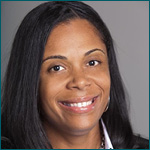
Featuring Joy Bivens, Director of Franklin County Jobs and Family Services

Moderated by Dr. Valerie Alloy, Chief, Grants Administration for the Office of Community Planning & Collaboration, Lead Early Childhood Mental Health Initiatives for the Bureau of Children and Families, Ohio Department of Mental Health and Addiction Services
In this panel, Rep. Howse, Councilmember Tyson, and Director Bivens discuss the impact of racism and bias on young children and how this shows up in their respective roles. Specifically:
- Director Bivens notes that the people most impacted by poverty in the county (Franklin County) tend to be women and children of color.
- Councilmember Tyson says that racism impacts opportunities and resources, and manifests as inferior education, biased educators, as well as in housing, employment and healthcare policy.
- Howse shares the compelling historical fact that despite being founded in 1803, it wasn’t until 1978, or 175 years later, than Ohio had a Black woman serving in the Ohio House of Representatives. She touches on Ohio’s infant mortality crisis and COVID’s impact on working families at home with children as two other ways that racism impacts Black children disproportionately.
Dr. Alloy asks for concrete steps and strategies to advance racial equity work in one’s community.
- Director Bivens reminds us that you advocate for change if you don’t have people at the table who are being impacted by a policy the most.
- Howse offers simple but sometimes difficult advice: “Stand up, speak up, and act up.” She challenges listeners to stop being by-standers to injustice and to “put skin in the game.”
The panel also discusses the need to declare racism as a public health crisis – an action that Councilmember Tyson took for the City of Columbus, and that Rep. Howse proposed at the state level recently.
RESOURCES:
- Director Bivens – watch her discuss “Racism in Columbus” alongside other leaders in a Columbus Business First forum
- Rep. Howse – Ohio Legislative Black Caucus Declares Racism A Public Health Crisis
- Councilmember Tyson – learn more about her Commission on Black Girls
- Dr. Alloy – watch her present “Children, Racism and Trauma: A Systems Crash at the Intersection” during Case Western Reserve’s webinar titled “Trauma, Mental Health and Substance Use” (you can “register” to get the video on demand)
Closing
Closing out the day was Dr. James Moore, Vice Provost for Diversity and Inclusion and Chief Diversity Officer at The Ohio State University, who encourages us that our work and investment in ABAR practices today is planting the seeds that will reap a harvest tomorrow. To hear closing remarks, go to minute 47 of the policy recording or click here.

